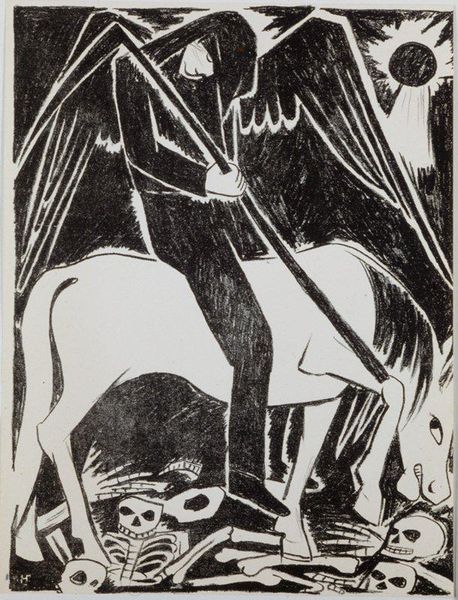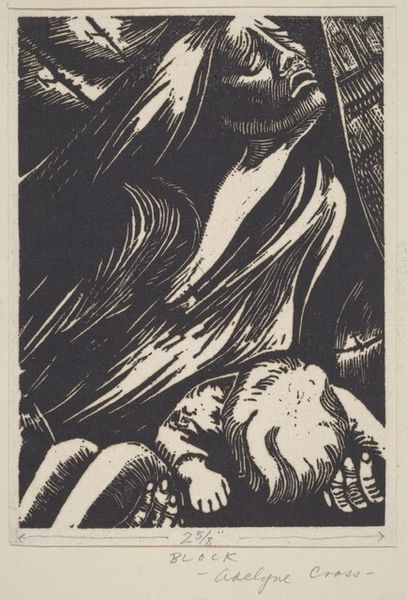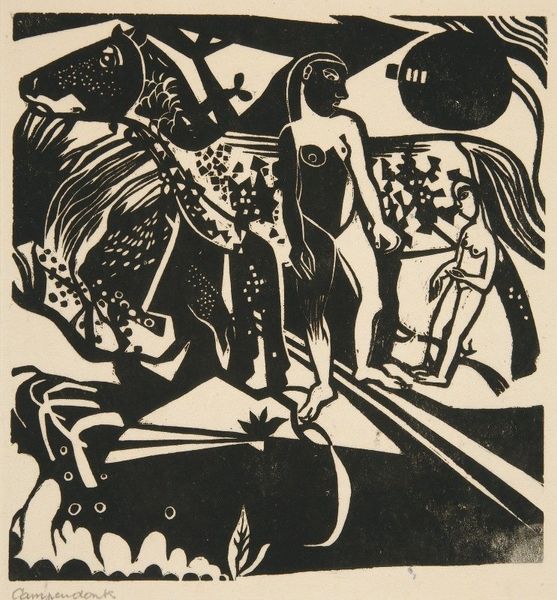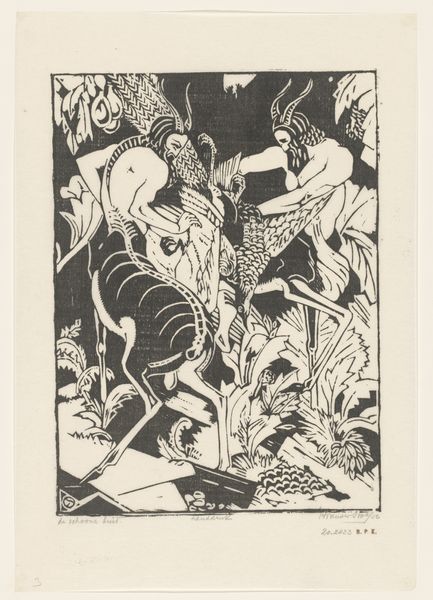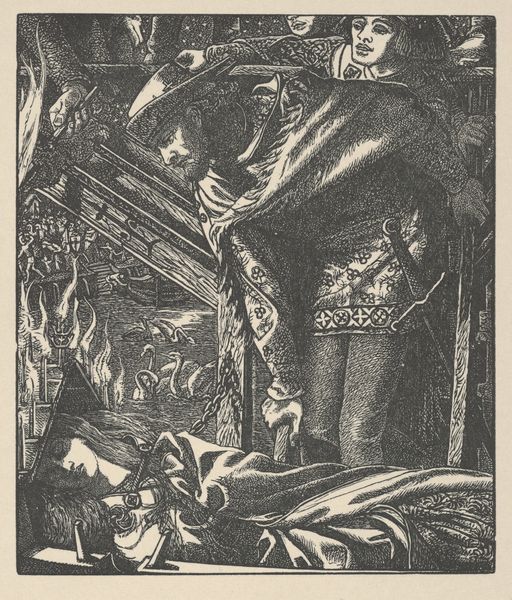
graphic-art, lithograph, print, woodcut
#
graphic-art
#
ink drawing
#
lithograph
# print
#
pen illustration
#
landscape
#
rayonism
#
figuration
#
woodcut
#
symbolism
#
russian-avant-garde
#
monochrome
Dimensions: 12 5/8 x 9 1/2 in. (32.07 x 24.13 cm) (image)12 3/4 x 9 3/4 in. (32.39 x 24.77 cm) (sheet)
Copyright: No Copyright - United States
Curator: Look at this stark and haunting image—Natalia Goncharova's 1914 lithograph titled "The Pale Horse." Editor: Well, right away, the high contrast and crude linework create a real sense of dread. It feels raw and unsettling, almost primal. Curator: Indeed. The rider, a dark figure cloaked and hooded, evokes the Grim Reaper, especially combined with the skeletal remains strewn across the bottom. "The Pale Horse" clearly draws on the biblical Book of Revelation, where Death rides a pale horse. Goncharova, rooted in Russian Symbolism, often explored apocalyptic themes. The choice of the horse, a traditional symbol of power and conquest, amplifies this impact. Editor: And let’s think about lithography as a medium in 1914, during the beginnings of the Great War. Its ability to produce relatively quick and affordable prints made this work widely accessible, didn’t it? The immediate visual impact combined with easy distribution seems like a potent form of social commentary during a time of upheaval. It connects the handmade nature of the lithographic stone with mechanical reproduction, underscoring anxieties of mass production. Curator: Precisely. We see in this woodcut piece the meeting of the spiritual and the tangible. Consider the black sun or moon – an eclipse, perhaps? – high above, a symbol heavy with foreshadowing. Editor: It’s also worth noting Goncharova's departure from traditional landscape. This isn’t a romanticized view of nature. The ground seems to writhe with decay, and the horse itself seems thin, almost spectral. Even the technique suggests a brutal immediacy; it's as though the image has been ripped from a collective nightmare. Curator: Yes. I think that the effectiveness of "The Pale Horse" lies in how it visually renders the invisible forces that shape our lives and cultures—forces like mortality, fear, and perhaps, the looming shadow of war. Editor: Looking at the layering and texture created by lithography also reminds me of how our perceptions of value in materials change over time. What once might have been regarded primarily as a mode of mass reproduction now carries a distinct, historically weighted aesthetic. I see value in considering the conditions of the artist during that time. Curator: Very insightful. In this small print, Goncharova touches upon timeless anxieties, fears given visual form to prompt our consideration, both individually and collectively.
Comments
minneapolisinstituteofart almost 2 years ago
⋮
Russian artists responded to the outbreak of war in Central Europe in 1914 in paintings and works on paper. In her portfolio "Mystical Images of War," Natalia Goncharova depicts all aspects of armed conflict past and present, ranging from the archangel Michael riding triumphantly through flames on horseback to celestial beings observing fighter planes in combat. She realizes her apocalyptic vision of war in this powerful portfolio of masterful lithographs formally inspired by the solemn gravity of traditional Russian icons and the dynamism of contemporary Futurist painting. She successfully draws upon these diverse stylistic influences to express the horror of armed conflict.
Join the conversation
Join millions of artists and users on Artera today and experience the ultimate creative platform.
